Frequently when looking up motorcycle specs, you see engine displacement along with bore and stroke.
“What are these mystical figures?” I used to think. “Why should I care about the dimensions of the inside of a motorcycle? All I care about its displacement, baby!”
The reality is that bore and stroke mentioned for a reason — to help you understand how the motorcycle’s engine gets that displacement, and to compare those figures to other bikes in the same class (or even series, as the manufacturer develops the engine).
In addition, sometimes I see terminology like “oversquare” or “long stroke”. Square?? I thought pistons were round? All of these are a little confusing for the uninitiated (which includes me generally in life), so I’m putting together a simple guide explaining what I’ve learned.
These guidelines work equally for cars and motorcycles. But given this website is just about motorcycles, the examples I use here are for bikes. (I do sometimes use cars, if I am carrying lots of stuff, have a passenger, or it’s just too cold and wet. But I’ll never admit it!)
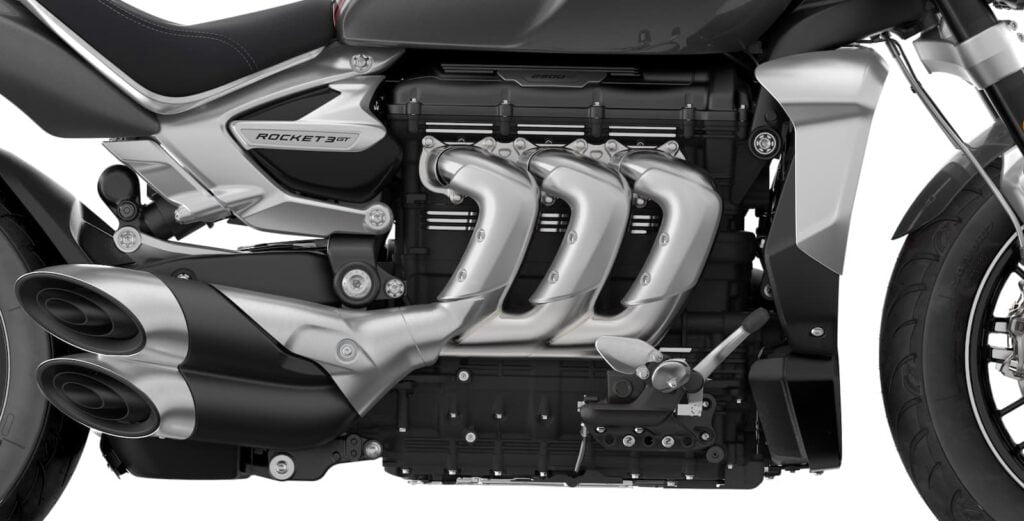
Are you obsessed with motorcycles?
Well, I am. That’s why I created this site — as an outlet. I love learning and sharing what others might find useful. If you like what you read here, and you’re a fraction as obsessed as I am, you might like to know when I’ve published more. (Check the latest for an idea of what you’ll see.)
Calculating Motorcycle Engine Displacement from Bore and Stroke — in a nutshell
Let’s start with the relationship between bore and stroke and engine displacement. Math time!
Do you remember how to calculate the volume of a cylinder? It’s equal to the surface area of the cylinder’s cross-section times its length. Use that formula with bore and stroke, and you get displacement.
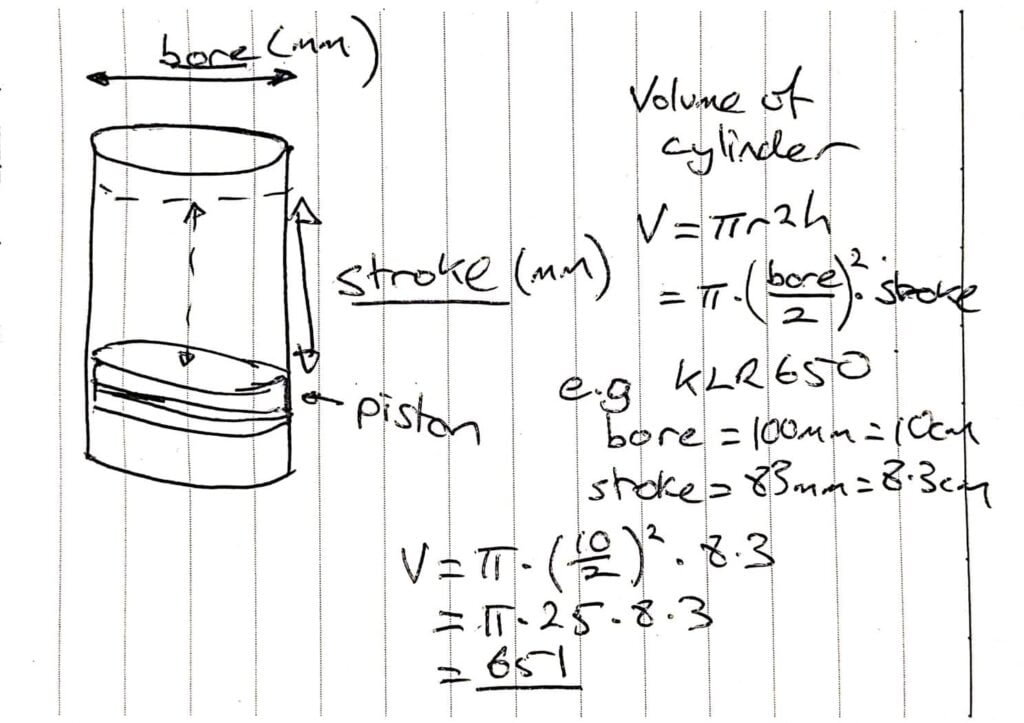
In a nutshell, the formula to calculate engine displacement for a motorcycle (which is the same as for other engines) is:
π x Cylinder radius2 x stroke length x number of pistons
Further simplified, the displacement in cubic centimetres (cc) from bore and stroke which are typically given in mm is
bore2 x stroke x cylinders x 0.0007854
I use that simplified formula for calculating engine displacement — I’ve checked with a number of examples and it’s accurate enough.
Mathematics of calculating motorcycle engine displacement
Let’s look at the first formula in more detail.
- The bore of a cylinder is the diameter of it. So a cylinder with a bore of 100mm is 100mm wide. The radius is half this bore.
- The stroke of a cylinder is the distance the piston travels from top to bottom.
- The number of cylinders is related to the architecture. An inline-four engine has four, a V-twin has two, etc.
The displacement of one cylinder is the same as its volume. Stretching your memory back to high school maths, the formula for the volume of a cylinder is V=πr2h.
For an engine, this means the volume = π x the square of the radius (half the bore) x the stroke.
Multiply that by the number of cylinders, and you have the total engine capacity.
The second formula is a simplification, combining up all the constants in the formula (necessary to convert bore in mm to radius in cm, and to convert stroke to cm, combining them with pi).
Weird but important caveat: Some very rare motorcycles don’t have round cylinders. For example, the Honda NR750. If you have one of these, then firstly, can I meet you? I mean, I’m just interested in your motorcycle, but we can also hang out. Secondly, your oval-pistoned motorcycle is not only difficult to find parts for, but harder to calculate displacement — you can’t use the above formulae.
Examples of calculating engine displacement
Let’s look at a few examples of calculating engine displacement from bore and stroke. I think it’s most instructive to look at two similar motorcycles or engines.
- The K5 Suzuki GSX-R1000 was an iconic engine, the first true “litrebike” of the GSX-R series. It had a bore and stroke of 73.4mm and 59.0 mm and 4 cylinders. Plugging this into the second formula, we get 73.4^2 x 59 x 4 x 0.0007854 or 998.6 cc.
- The K9 Suzuki GSX-R1000 was still a literbike, but had a more over-square engine (see terminology below), designed to rev higher (but producing less low-end torque). It had a bore and stroke of 74.5mm and 57.3mm and still four cylinders. WIth these values you get 74.5^2 x 57.3 x 4 x 0.0007854 = 999.1 cc.
And another two contrasting examples. The Ducati Panigale V2 and Supersport 950 both have similar engine displacement. But they have very different power characteristics and general driveability — in fact, the V2 makes around 1.5x the power of the Supersport.
- The Ducati Panigale V2, a superbike, has a bore and stroke of 100mm and 60.8mm. So 100^2 x 60.8 x 2 x 0.0007854 = 955cc.
- The Ducati Supersport 950 has a similar capacity to the Panigale, but a different kind of engine with a longer stroke. It has a 94mm bore and 67.5mm stroke. 94^2 x 67.5 x 2 x 0.0007854 = 937cc.
Of course, there’s a lot more to peak power than just bore and stroke (and engine displacement). But as you can see, engines with similar displacement can have quite different characteristics.
Some Motorcycle Engine Displacement Terminology
A few words are thrown around describing engine characteristics, and I thought I’d go into what they mean here.
A lot of these are specifically about how bore and stroke affect motorcycle performance, and refer to the “stroke ratio”, being the ratio of the bore to the stroke (or vice versa).
- Over-square: means “the bore is [much] wider than the stroke is long”.
This term is kind of misleading because a cylinder isn’t square — it’s round! (Well, mostly. Sometimes there’s some ovality to them.). Anyway, “Square” would mean that the engine’s bore and stroke are the same in millimetres. “Oversquare”
An over-square engine typically has lighter pistons and thus can (with some other tweaks, e.g. to valves) be designed to rev more easily and to a higher peak RPM.
An over-square cylinder is sometimes also referred to as a short-stroke engine. The term “short-stroke” is used to describe an engine that has short piston stroke. These are usually found in sportbikes that have high rev limits.
- Long-stroke: A long-stroke engine isn’t necessarily the opposite of “over-square”, it’s just longer stroke than other comparable motors. But it’s often the opposite.
For example, the K5 GSX-R1000 motor, the block of which is still used in today’s Suzuki GSX-S1000 and Katana, is the “long-stroke” motor compared to the slightly shorter stroke (more over-square) motor of the K9 GSX-R1000.
A long-stroke motor tends to be more easily tuned for low-end torque, at the cost of less extreme high-end horsepower, as it does not rev as high as easily.
Long-stroke motors are sometimes referred to as “undersquare’ motors.
- Stroker: An engine that has been modified to have a longer stroke, thus increasing its displacement.
A common modification to increase engine displacement of an engine is to fit a “stroker” crank, which is designed to decrease increase travel of the piston, thus increasing total displacement.
You can also bore out the cylinders of a motor to increase displacement. But this is more often done by manufacturers between generations of the same basic motorcycle.
Bore and Stroke, Engine displacement, Torque, and Power — How do they relate?
An old adage is that there’s “no replacement for displacement”. But is there? Motorcycles with the biggest engine displacement don’t always have the most power. So what more do we need to know?
Examples are best for this. Let’s look at a few different motorcycles with the same (or similar) engine displacement and compare their power and torque characteristics.
| Characteristic | Yamaha Stryker | BMW R 1250 GS | Suzuki GSX-1300R Hayabusa | Honda ST1300 |
|---|---|---|---|---|
| Displacement | 1304 cc | 1254cc | 1340 cc | 1261 cc |
| Bore and Stroke | 100 x 83 mm | 102.5 x 76 mm | 81 x 65 mm | 78 x 66 mm |
| # pistons | 2 | 2 | 4 | 4 |
| Peak power | ~60 kW (80 hp) @ 3,000 rpm* | 100 kW (136 hp) @ 7750 rpm | 146 kW (196 hp) @ 9,800 rpm | 91 kW (125 hp) @ 8,000 rpm |
| Peak torque | (81 lb-ft) @ 4,000 rpm | 143 nM (105 lb-ft) @ 6250 rpm | 154 Nm (114 lb-ft) @ 7,200 rpm | 125 Nm (92 lb-ft) @ 6,000 rpm |
* estimate based on dyno runs, give or take 10%
So, four motorcycles, all with 1250-1350 cc displacement, all with massively different power and torque figures. Obvious conclusion: There are many things other than displacement that contribute to power. A few of these are bore and stroke, compression ratio, camshaft timing, and components that help the engine rev quicker and higher.
I mentioned briefly above that a shorter-stroke engine can be made to rev higher, thus producing more power.
Conversely, longer-stroke engines can be tuned to make more torque, people say. But why is this the case?
Firstly it’s important to understand the relationship between torque, speed, and power. In a nutshell, power = speed x torque x (a constant). It’s a linear relationship.
So if you keep torque constant but rev higher, you get proportionally more power. And even if torque drops off a bit, if speed increases by a lot, you’ll still get more power. That’s why power peaks higher than torque.
Lots of torque down low may be fun and fine, great for traffic, wheelies, and 0-60 times, but lots of torque up high means lots of power. Lots of power means the ability to break through the wind and get to high top speeds. (More on this another day.)
For an engine to make high-RPM torque (and thus high power), a lot of things have to work in concert. You have to have valves and springs that can move quickly, low-friction components, low speed, and low-weight components. More, too.
But lets focus on two factors related to bore and stroke that help engines rev faster:
- Low friction pistons/cylinders: The less a piston has to travel, the less friction it can generate against the surfaces it (nearly) touches. Of course, other things can help here too, like good lubrication, and low-friction components.
- Low piston speed: Engine designers think of the mean and maximum speeds that a piston needs to reach to make its trip up and down the cylinder. The longer the stroke, the higher the piston speed for a given engine speed. Higher speeds is worse in multiple ways — lubrication might not work as well, sometimes the piston speed might exceed the flame’s speed (causing lost power), and (assuming same piston mass), more force is required to turn the piston around and send it the other way.
So, in summary, a short-stroke engine means that at a given piston speed, all other things equal, you can afford to be doing higher RPM.
So if they rev higher and make more power, why aren’t all motorcycles short stroke?
Reading the above you might think: ok, short stroke is clearly better. You get to make torque higher up, which means more power, and more power = more better!!!!1
Well, that’s true in say a race bike, or a Formula 1 car. But bore and stroke affect real-world driveability, too, and sometimes adversely.
If you have a short stroke engine that’s designed to have lots of torque at high RPMs, it might still just be producing a modest amount of torque for everyday use.
Take the 2015+ Yamaha R1, for example, a pretty epic race bike that produces around 200 hp. It peaks in power at around 13K RPM, and has a big torque plateau between 8,500 and 12,000 rpm of around 100 Nm (73 ft-lb).
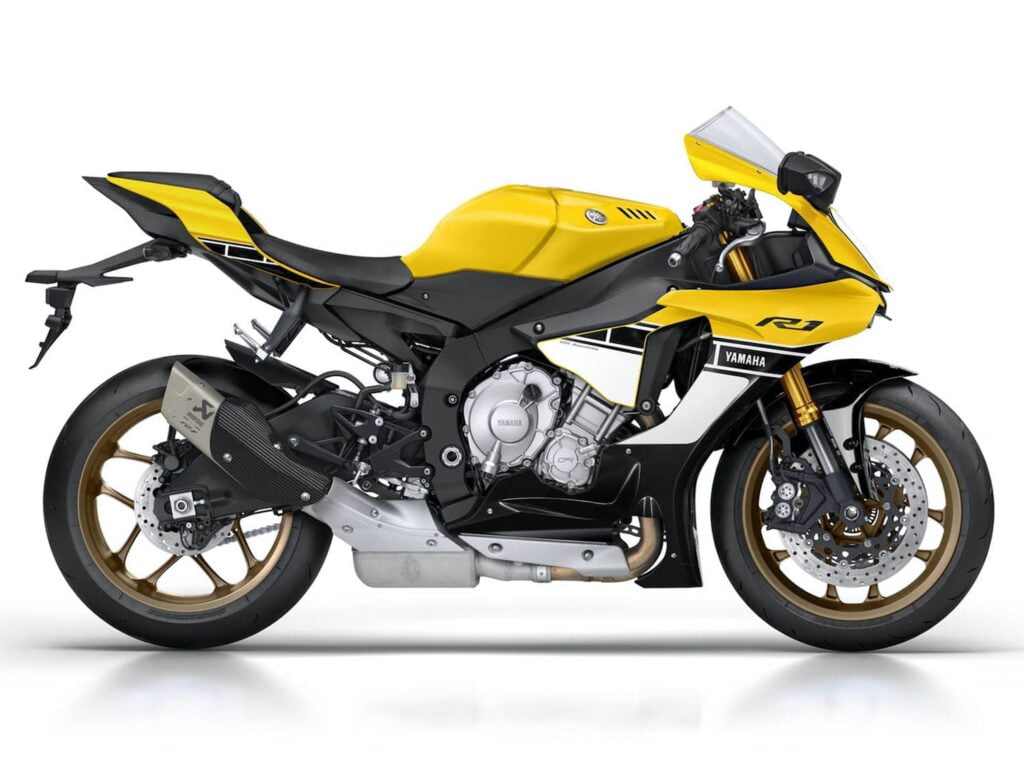
That’s great, but who revs up to 8,500 rpm every day? Maybe some people do, but you’d be breaking most speed limits when you’re there. And that’s just the beginning of the torque party.
Below 8,500 rpm, the 2015+ Yamaha R1 has a much more modest torque plateau of around 70 Nm (~50 ft-lb). Basically, below 8,500, the Yamaha R1 performs worse than the more modest (but awesome) Yamaha MT-09.
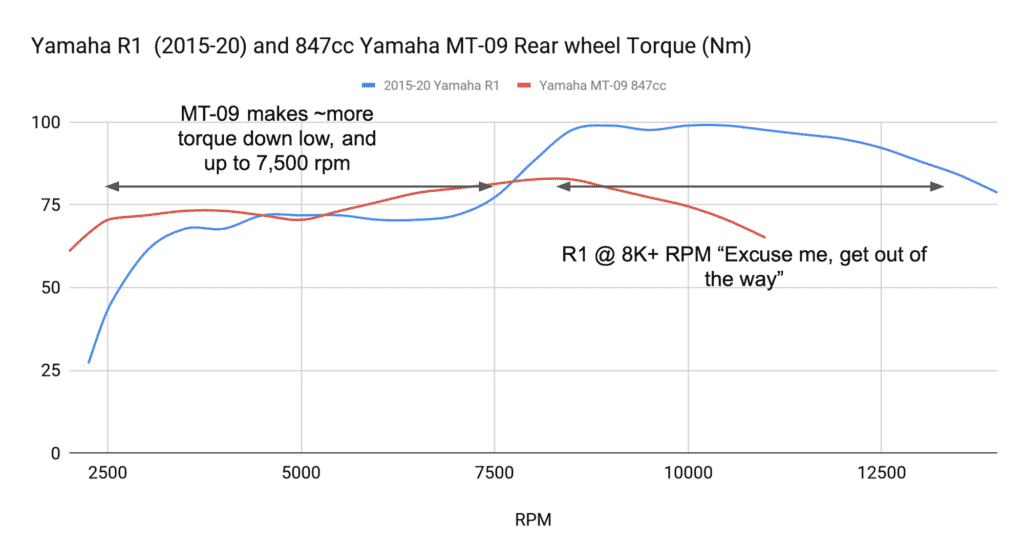
Other factors like gearing (the R1 being more geared for high speed) also make the MT-09 more responsive at low RPM than the R1.
Why and how does the R1 perform moderately at low RPM, but so well at high RPM? Well, you might have to ask an engine designer or professional tuner. Many factors are in play. A few commonly cited ones are:
1. Intake and exhaust: A motorcycle that produces high power has to burn a lot of fuel, thus breathe a lot in and expel a lot of exhaust fumes. This means that the intake is designed for high-speed airflow, as is the exhaust.
The camshafts for both intake and exhaust are designed to work best at high RPM. It’s impossible to design these components to work perfectly efficiently across an infinitely broad rev range.
Trying to get close to this goal of breathing well across a broad RPM range is one of the goals of engine design, sometimes with tech like variable valve timing (like in the 2019+ S 1000 RR), variable length intakes, etc.
2. Combustion efficiency (inside the piston): A short-stroke engine has wider pistons. This means that the explosion has to travel a greater distance to cover the entire surface of the piston and to push it down evenly.
It’s just hard to get that to be as efficient as a smaller explosion chamber as in a smaller diameter, longer-stroke engine (assuming the same total displacement). Some things engines employ are finer spray injectors and multi-spark plug designs.
3. Engine size and weight: Wider (short stroke) pistons mean thicker metal between the pistons and a wire engine.
Taller (long-stroke) pistons leads to a taller engine and a thicker head. There are trade-offs either way.
So as with all aspects of engine design, balancing engine displacement with bore and stroke is something designers think about a lot.
High torque, but low power — Big Bore Big Twins
A corollary question is: Why aren’t all motorcycles big bore?
A long time ago, I noticed that Harley-Davidson didn’t publish power figures for most of their motorcycles. But they DO publish torque figures.
Why is this? There are many related questions. Like why is it that a Suzuki SV650 (75 hp) rider who can shift quickly enough can keep up with a ZX-6R 636 (130 hp) until at least 80-100 km/h or so — despite the fact that the latter has nearly twice the peak power?
The answer to both these questions is that there’s something about torque. I once saw it glibly put that “torque = acceleration, power = top speed”. There’s a lot more to it, but I agree with that general idea in principle.
When people describe a motorcycle as “fast”, they mean any one of three things:
- It has a high top speed, like any of the Ninja H2 range of motorcycles does
- It has a low 0-60 or 0-100 — accelerates quickly
- It “feels” fast, which is very subjective, but which can simply mean “massive amounts of pull”
That last factor of “feeling” fast can apply to a lot of V-twin cruisers that have surprisingly low rev limits and horsepower figures.
Big cruiser motorcycles don’t rev high (with very few exceptions, anyway), but make a lot of torque down low. How do they make that big torque? With big bore pistons.
Take the Suzuki M109R, a motorcycle with pistons that have 112mm bore and 90.5mm stroke (now go work out its displacement!).
Because of its huge bore, the M109R is able to make monster torque.
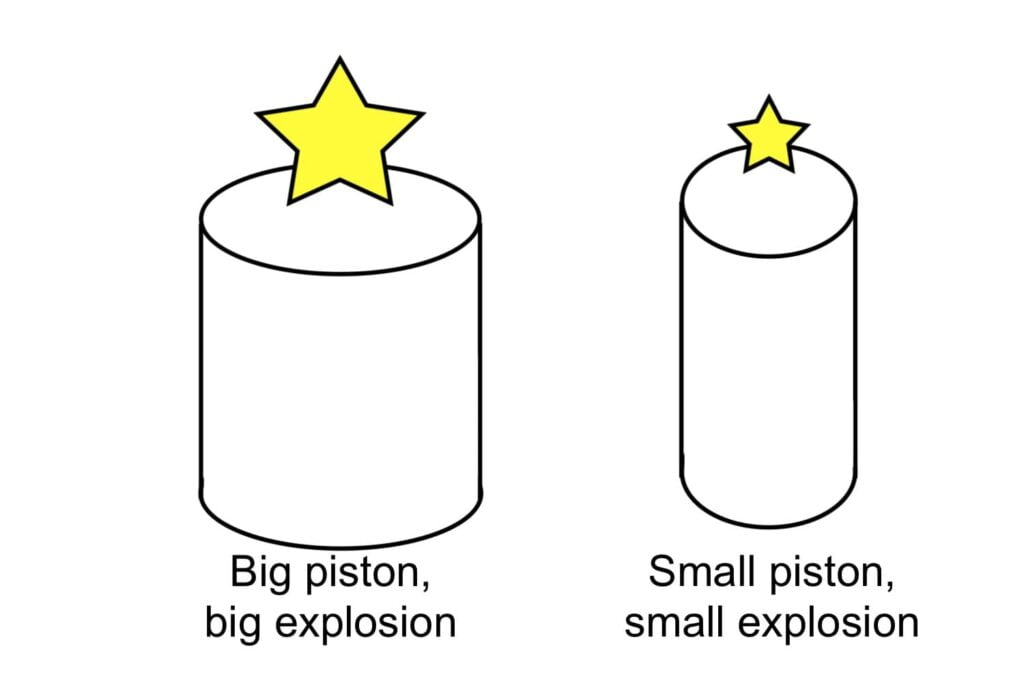
So — why not have big pistons for big torque on all motorcycles?
It comes down to the same trade-offs as above.
- Having big pistons means more moving mass (especially as the torque is greater, which means you need more metal), which is harder to move at high RPM. So large pistons come at a cost of high RPM, and thus high horsepower.
- Having wide combustion chambers means it’s more difficult to get even combustion (and thus high combustion efficiency).
Those are just a couple of inputs into engine design.
Wrap-up
Hopefully this was a bit illuminating into the relationship between engine displacement and bore and stroke. Leave any questions (or clarifications) in the comments!

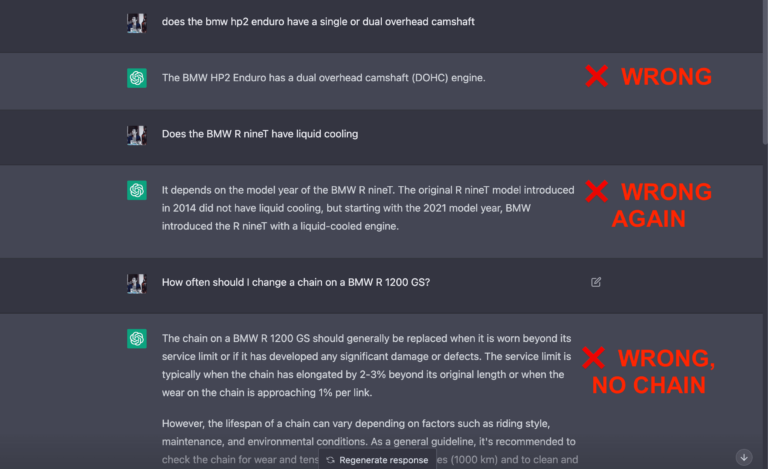
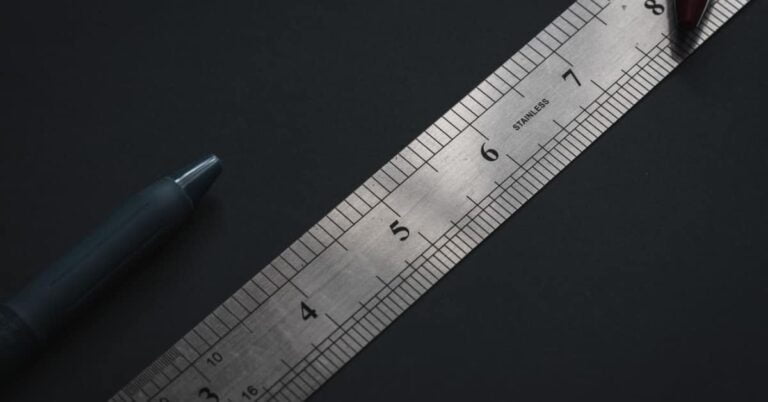
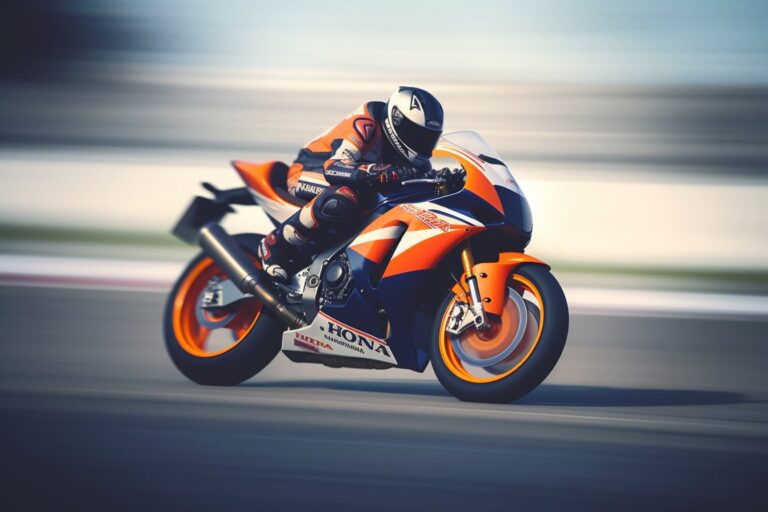
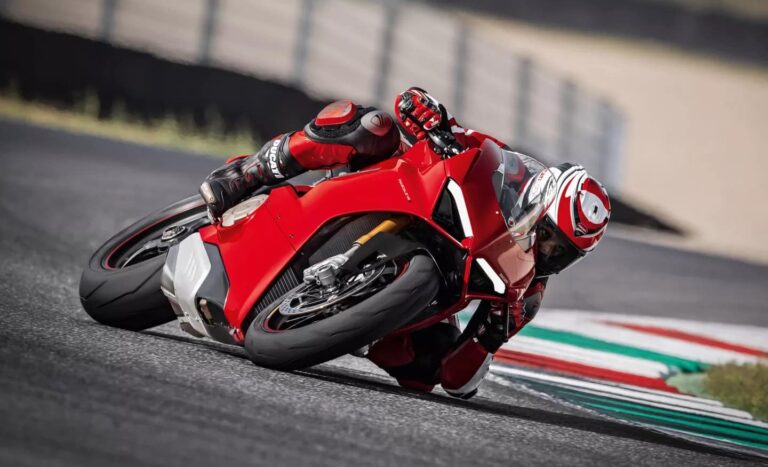
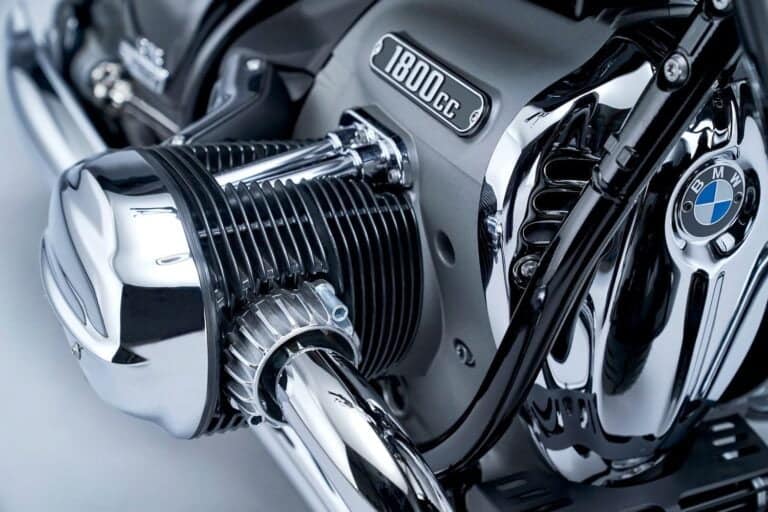
![Triumph Electric Motorcycle TE-1 Prototype — Final Results [Updated] 11 Triumph Electric Motorcycle TE-1 Prototype — Final Results [Updated]](https://motofomo.com/wp-content/uploads/2022/02/Triumph-TE-1-Electric-Motorcycle-Prototype-rhs-side-view-768x512.jpg)
Which is fuel efficient and reliable then, CLX 700 Sport vsXSR 700 vs Z650? Thank you.
These bikes all perform similarly in terms of efficiency, and the biggest variable is likely to be how you ride it.
Great article! Just getting into motorcycles and this was indeed very illuminating
Lol, “squidlet”. We’re all squidlets.
Thank you, a well written resumé of the subject. Another language skill in the pot😉🙏🏼🔧🦾